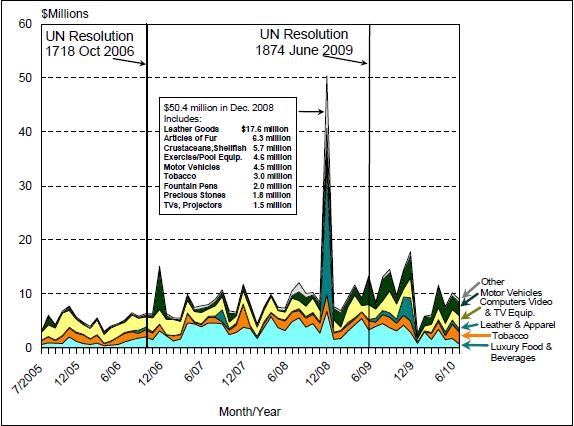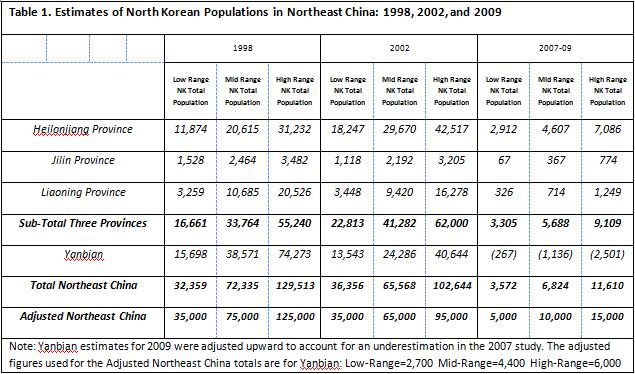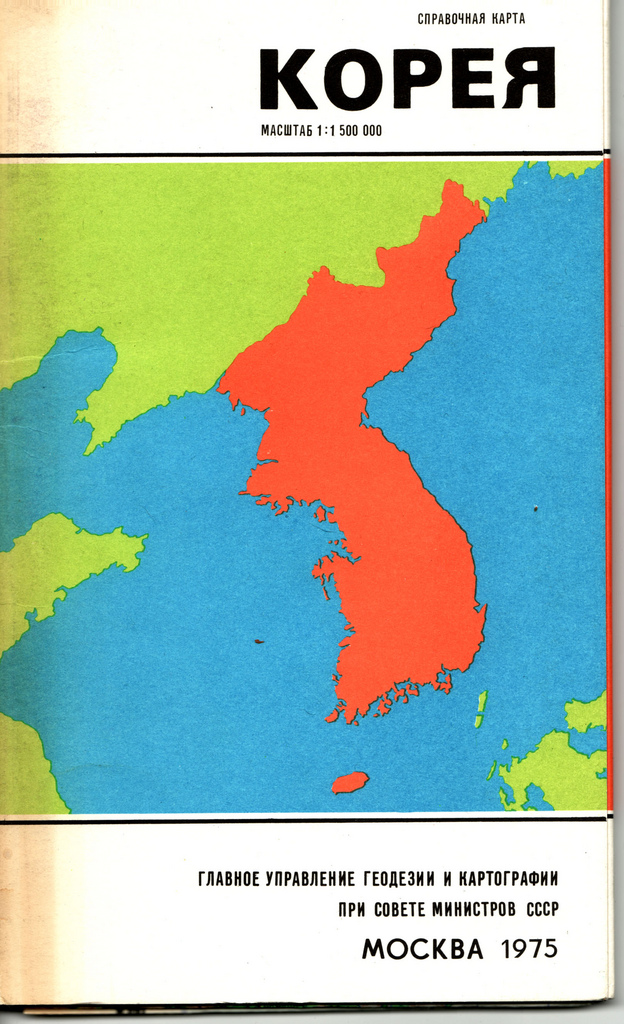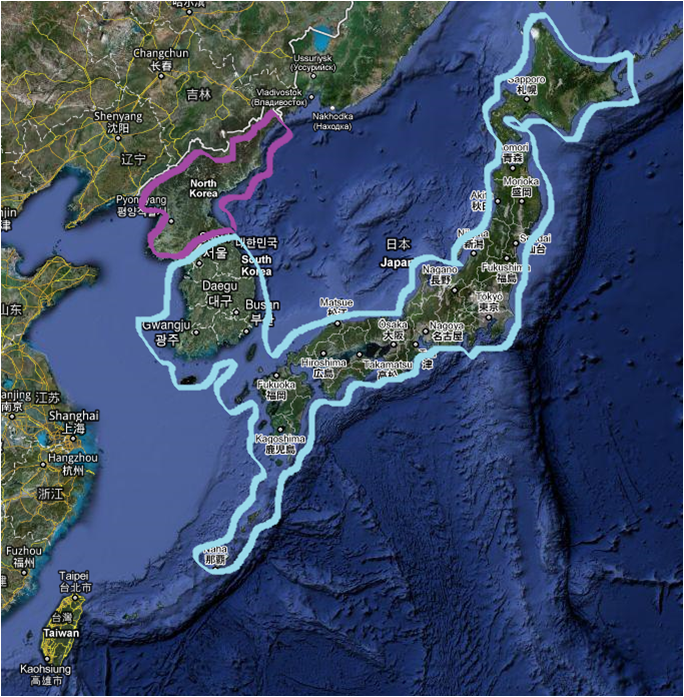Special Reports are longer, often more technical, documents consisting of entire articles, government statements, and other documents relevant to security and peace in Northeast Asia.
Implementation of U.N. Security Council Resolution 1874

The Congressional Research Service writes, “While a full U.S. trade embargo on North Korea is not in place, the United States nevertheless has very limited trade with the country. Therefore, one option for focusing U.S. policy is to influence, or at least closely monitor, other states’ national measures to implement the sanctions under UNSCR 1874. This could be accomplished by focusing attention on North Korea’s main intermediaries, including China, as well as transshipment countries such as Singapore, Malaysia and the United Arab Emirates”.
Go to the articleChanging Dynamics of U.S. Extended Nuclear Deterrence on the Korean Peninsula

Cheon Seongwhun writes, “…some safeguard measures are necessary to supplement the diminishing American nuclear umbrella on the Korean peninsula. Noting that the uniqueness of the threat to South Korea makes it a suitable place to actively apply the new concept of the regionally tailored deterrence architecture, this paper proposes to implement a dual-track approach of negotiation of the North Korean nuclear crisis in tandem with preparation for the redeployment of U.S. tactical nuclear weapons in the ROK. If the negotiation track fails to resolve the crisis, then United States should redeploy a few dozen tactical nuclear weapons in South Korea and offer to hold mutual nuclear disarmament talks with North Korea to barter the withdrawal of U.S. tactical nuclear weapons for the elimination of North Korean nuclear weapons.”
Go to the articleNorth Korea: Migration Patterns and Prospects

Courtland Robinson, Assistant Professor at the Center for Refugee and Disaster Response at the John Hopkins Bloomberg School of Public Health, writes “It is my view that migration, in and of itself, is not likely to bring about regime collapse or change, but it can serve either as a catalyst to unification or as a hindrance, depending on how it is “managed.” I put that word in quotes because much that passes for migration management is more a matter of mismanagement, further reinforcing the view that migration will seek its own terms despite (and often in reaction to) the policies and programs that seek to regulate it.”
Go to the articleThe Korean Peninsula: Challenges and Opportunities for Russia

The Russian National Committee writes, “From the conceptual point of view, for Russia the most desired outcome is national reconciliation and the peaceful coexistence of the two Korean states on the path to an eventual unification of Korea over a long period of time. The appearance in the long-perspective of a unified Korea that seeks to maintain friendly, neighborly and cooperative relations with Russia does not contradict Russia’s core interests (in particular in comparison to other neighboring countries). At the same time, the prospects for a united Korea in the foreseeable future are quite low. However, it would be prudent to hedge our risks, as we cannot completely rule out the possibility of a sudden crisis that could lead to a rushed unification. The uncontrollable escalation of the Korean conflict remains a possibility, and the task of Russian policy is to not allow the “explosive” scenario to unfold and to explain that the most advantageous scenario is gradual convergence, which at the appropriate time would put voluntary rapprochement of state mechanisms on the agenda.”
Go to the articleImplementing a Japanese-Korean Nuclear Weapon Free Zone: Precedents, Legal Forms, Governance, Scope and Domain, Verification and Compliance, and Regional Benefits
Michael Hamel-Green, Dean of and Professor in the Faculty of Arts, Education and Human Development, Victoria University, writes, “The time is now ripe for the leaderships in Korea and Japan to show the same kind of vision that Brazilian and Argentina leaders showed in the early 1990s in averting a nuclear arms race that would have undermined their economic development at the same time as risking future nuclear conflict… we now have a new window of opportunity for denuclearization of Northeast Asia despite the current crisis in relations between the two Koreas.”
Go to the articlePolitical Prospects for a NWFZ in Northeast Asia
Leon V. Sigal, Director, Northeast Asia Cooperative Security Project at the Social Science Research Council, writes, “While broaching the subject of a NWFZ runs political risks, conventional deterrence continues to operate on the Korean Peninsula. The South has long had conventional forces capable of defeating the North, with or without U.S. troops, and the North has long held Seoul hostage to its forward-deployed artillery. The North’s nuclear weapons affect the balance of power on the Korean Peninsula insofar as they could put U.S. forces and bases in Japan at risk.”
Go to the articleKorea-Japan Nuclear Weapon Free Zone (KJNWFZ) Concept Paper

A Korea-Japan Nuclear Weapon Free Zone (hereafter KJNWFZ) is a new concept. Once realized, it could help resolve a number of linked and intractable security issues in Northeast Asia at the same time. This includes the need to respond to North Korea’s nuclear breakout without undermining the Global Abolition policy announced by President Obama; the need for Japan and Korea to deepen their non-nuclear commitments to more deeply ingrained “forever” status without hedging; and the need for Japan-Korean cooperation to lay the foundations for a comprehensive security mechanism and long-term regional security institution, including through cooperative nuclear fuel cycle and space development activities.
A version of this concept paper is also available in Korean and Japanese.
Go to the articleJoint Investigation Report on the Attack Against ROK Ship Cheonan
Joint Investigation Group released the full report on the sinking of the ROK Corvette Cheonan. This 300 page report includes detailed results from the JIG’s investigation including testimony from survivors and analyses of possible causes of the sinking. The report concludes that the Cheonan was sunk by a “CHT-02D torpedo with approximately 250kg of explosives manufactured and used by North Korea.”
Go to the articleEast Timor Crisis of 1999

A collection of links regarding analysis and news of the 1999 East Timor Crisis. Wade Huntley and Peter Hayes, “East Timor and Asian Security” Theodore Friend, “Indonesia: Confronting the Political and Economic Crisis” James Cotton, “East Timor and Australia- Twenty-Five Years of the Policy Debate” Sylvia Tiwon, “East Timor and the ‘Disintegration’ of Indonesia […]
Go to the articleAnnouncement of Measures against North Korea
The ROK Ministry of Unification released this statement explaining the measures that the ROK government will take in response to the sinking of the Cheonan. These measures include a ban on DPRK ships navigating ROK territorial waters, the suspension of trade with and humanitarian aid to the DPRK, a ban on new investment in the DPRK, and the prohibition of travel to the DPRK by ROK citizens.
Read a discussion of this article here.
Go to the article
